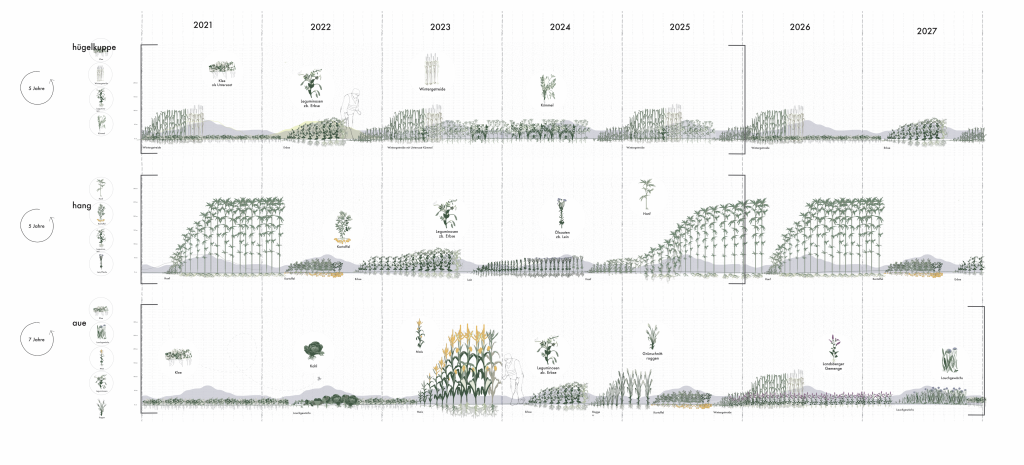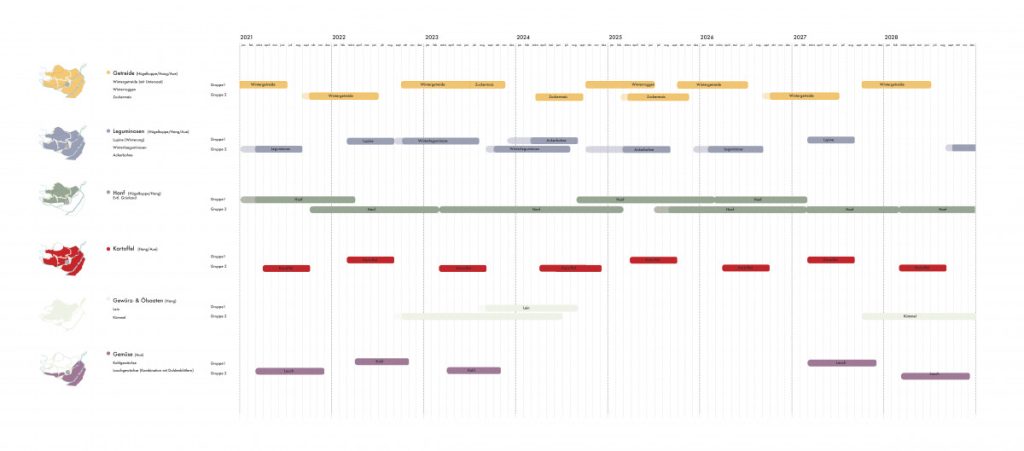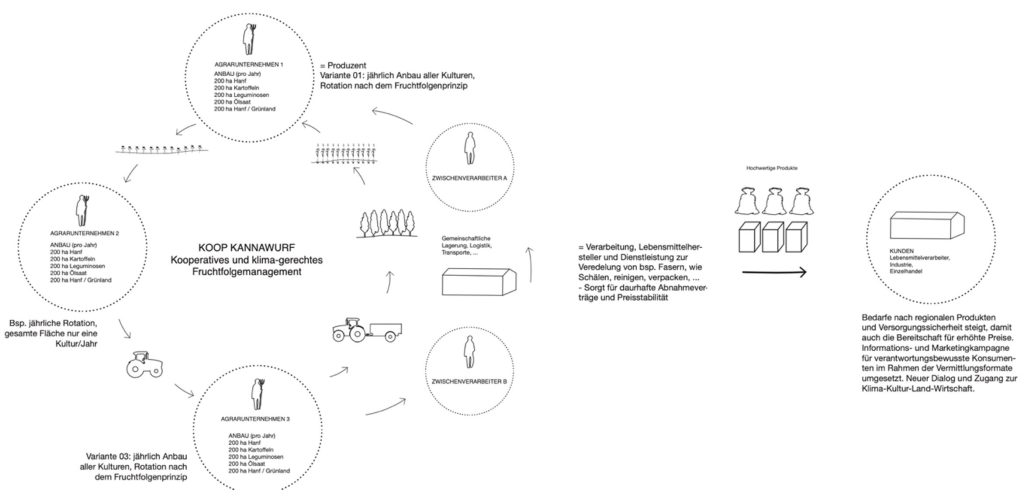Kannawurf

status
masterplan completed,
pilot project in progress
period
2019-2022
client
IBA Thüringen GmbH
project management
Kerstin Faber, IBA Thüringen
team G4C
Bernhard König, Lisa Maria Enzenhofer, Katharina Sauermann, Michela Thaler,
Sofia Inghilleri
project partner
Birgit Birnstingl,
SEKEM Energy GmbH
consulting
Claudia Siebeck, quartier vier
website
www.klimakulturlandschaft.de
1500 hectares of future
Temperatures are rising, extreme weather events are increasing, precipitation is falling mostly in the winter season and the growing season is shifting. But it is not only climate change that poses fundamental challenges to the current practice of agriculture, but also societal changes and increasing dependence on global developments. Sustainable agriculture must therefore be thought of in a multi-dimensional way in the future in order to adapt to the changes, as well as to minimise climate damage and remain competitive at the same time. The consequence of this multidimensional transformation process is a reassessment of our agriculture, its function, use, products and actors. The challenge is not only for farmers alone, but for us as a society.
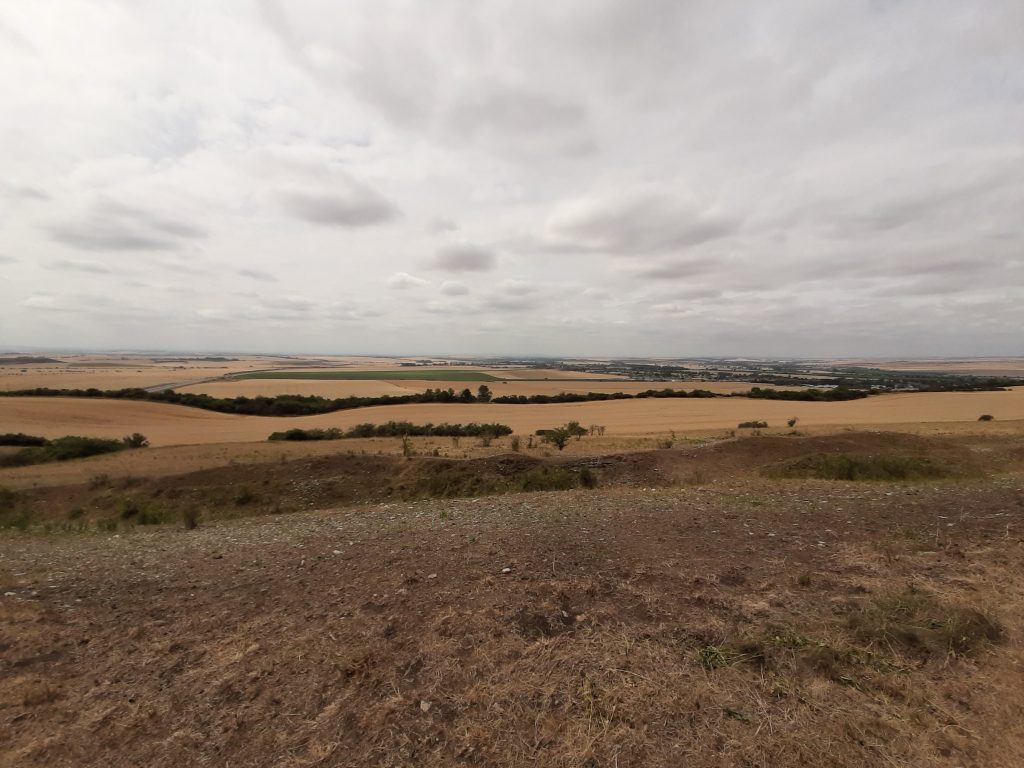
Using the example of Kannawurf, a municipality in the Thuringian Basin, an agricultural future concept was developed that considers ecological, economic and socio-cultural strategies in equal measure. The result is an image of the future for climate-friendly agriculture in the 21st century that takes a different look at agriculture and farming with new climate landscape typologies, on-farm crop rotation management and artistic interventions.
The project was funded from 2019-2021 by the European Agricultural Fund for Rural Development: Here, Europe invests in rural areas (EAFRD) and the Free State of Thuringia. Since 2021, the innovation sub-project “Keyline Design” has been tested as a new sustainable rainwater management system with follow-up funding.

What must landscape be capable of?
WIND/ CLIMATE
1. reduction of wind erosion
2. natural ventilation through wind corridors
3. reduction of heat islands
4. reduction of surface temperatures
WATER
5. increase in vegetative evapotranspiration
6. increased retention of precipitation
7. reduced runoff from floods
8. reduction of surface erosion
ECOLOGY
9. vegetative/ecological diversity
10. ecological refuges and corridors
11. natural livestock farming (grazing)
12. Soil-conserving management
ECONOMY/MANAGEMENT
13. local speciality crops
14. partial diversification of cultivation
15. local or regional processing
16. new income opportunities
AWARENESS
17. creating identity
18. experienting landscape processes
19. accessibility
20. participation and mediation
Landscape types and crop rotations
In cooperation with Birgit Birnstingl from Sekem Energy GmbH, a local climate model for a climate-friendly cultural landscape of the 21st century was developed. Based on 20 requirements for the landscape of the future, the landscape types floodplain, hill top and hill slope were developed, which were identified on the basis of their different local climatic effects. For each typology, different crop rotations have been developed to minimise wind and water erosion, heat islands and surface temperatures, and specific adaptation strategies to climate change.

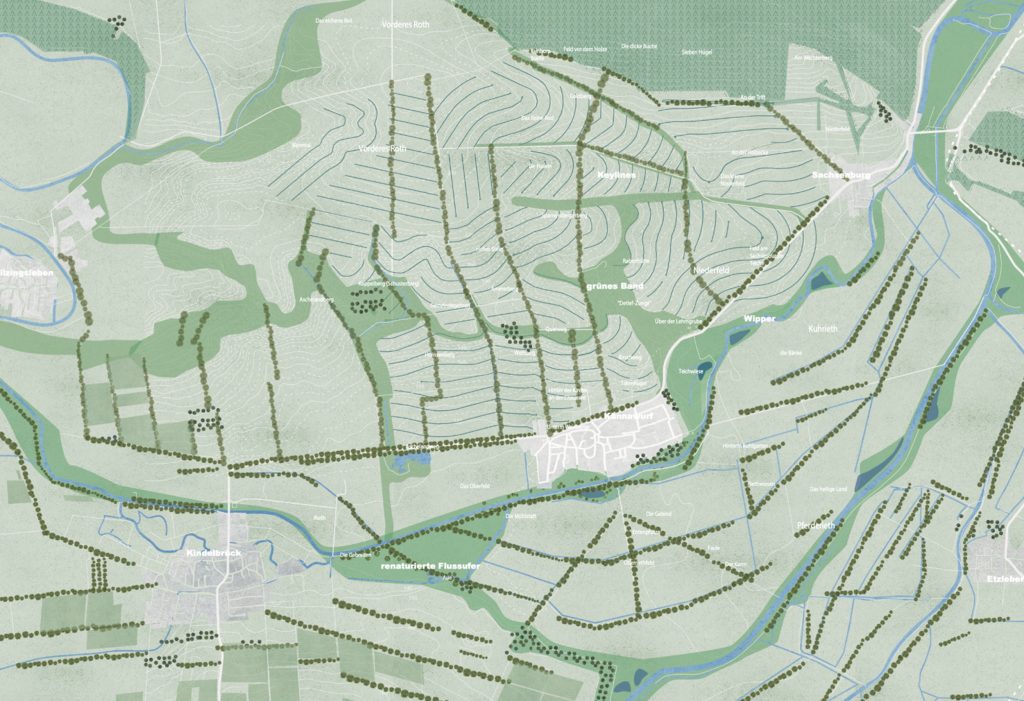
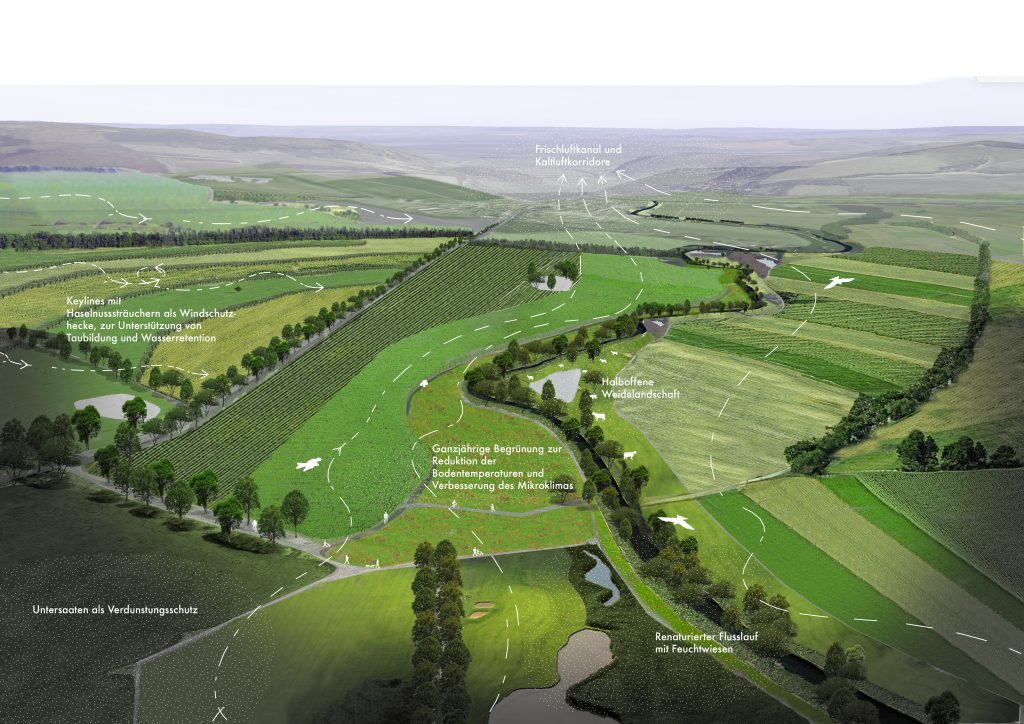
Open up and make it experienceable
Only those who know the landscape can develop a critical awareness of its use and management and learn to appreciate it again. This can be done by consciously shaping the land (agriculture) itself, but also by making it possible to experience it. An interconnected network of paths as a “Green Belt” with new and revitalised connections between the villages, oriented towards the needs of pedestrians and cyclists, offers initial accessibility. The course is designed in such a way that it primarily protects areas at risk of erosion and ecologically valuable areas such as wetlands, and the ribbon thus also serves soil and water protection.

Socio-economic model
The model also shows what cooperative agricultural production between farmers and processors could look like by means of inter-farm crop rotation management: If the rotation of cereal and vegetable crops in the field is not only organised within the farm, but also across farms and regions, larger quantities of each crop can be guaranteed despite smaller arable areas. This reduces the investment risk for the farmers, as they can start with small areas, and gives the buyers more security through stable deliveries. The sum of the small parts becomes a large, sustainable whole.
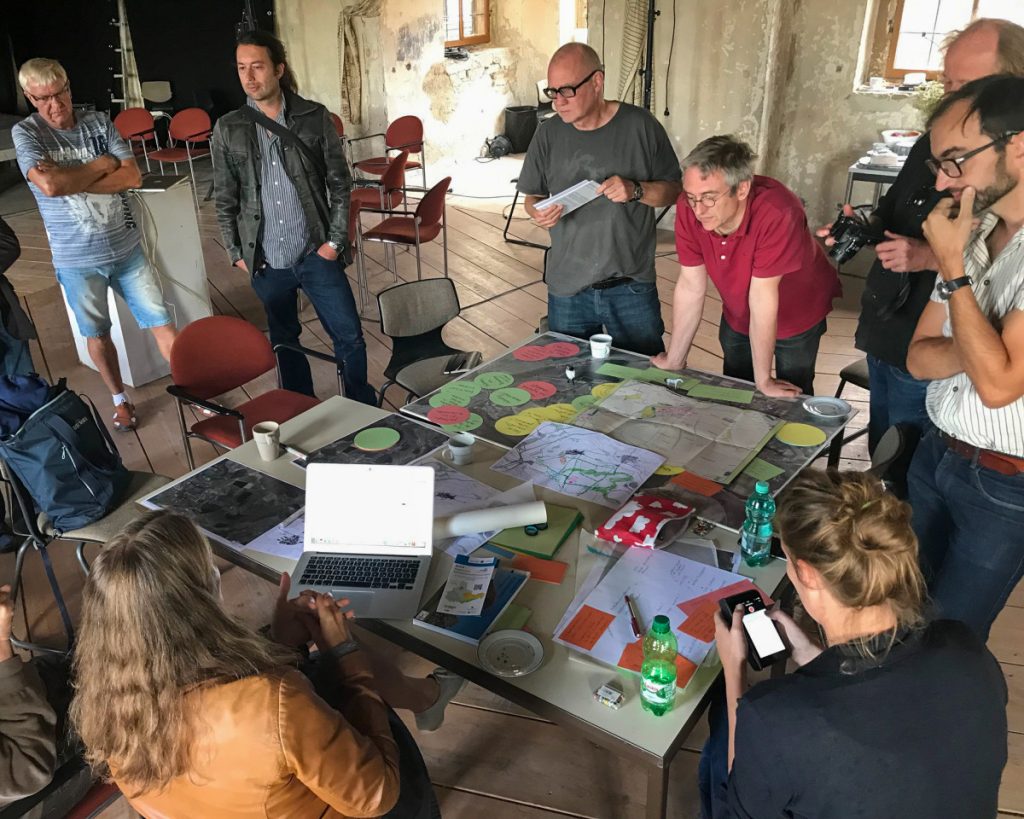
Partners
Koop Kannawurf I + II:
IBA Thüringen mit Künstlerhaus Thüringen e.V., Landwirtschaft Kannawurf Betriebsgesellschaft mbH, Thüringer Bauernverband, Agrar-GmbH Oldisleben, Green4Cities GmbH, Ökotrend, Thüringer Landesamt für Landwirtschaft und Ländlicher Raum (TLLLR)
Concept and masterplan:
Green4Cities GmbH, Wien/ Graz mit Sekem Energy GmbH, Hitzendorf
Keyline design:
Deutsche Agroforst GmbH, Brück
Consulting:
quartier vier, Leipzig
Hydrologic studies and simulations:
Tractebel Hydroprojekt GmbH, Weimar
Climate simulation and consulting:
INKEK GmbH, Lohfelden/Kassel
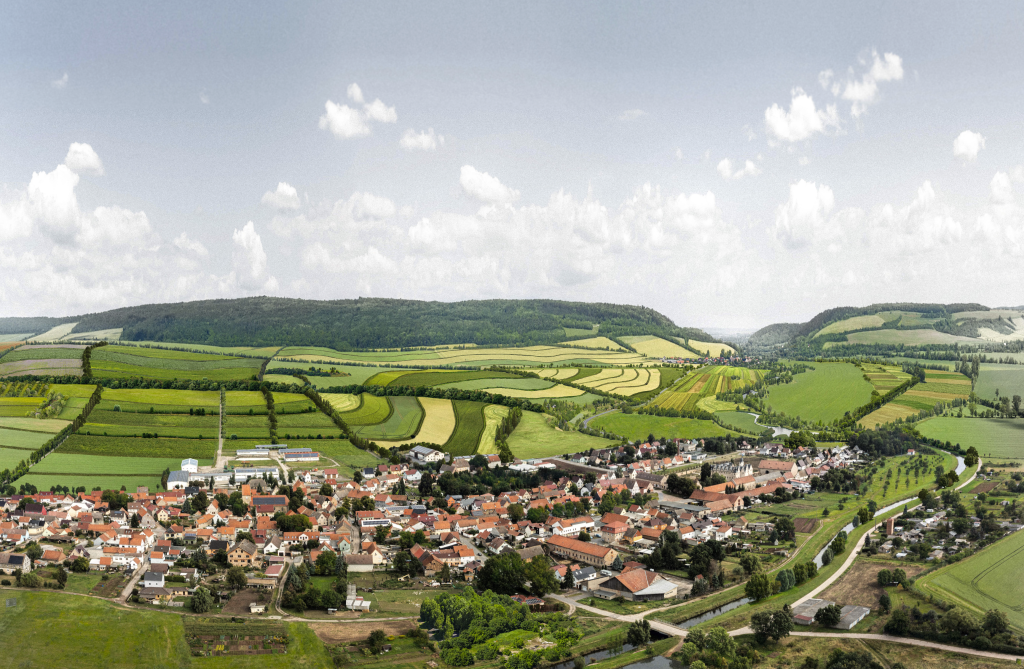
Floodplain
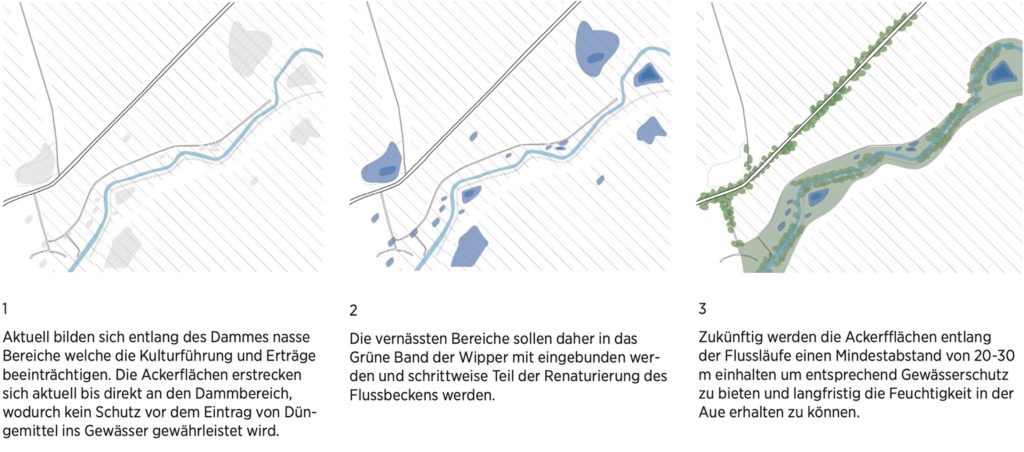

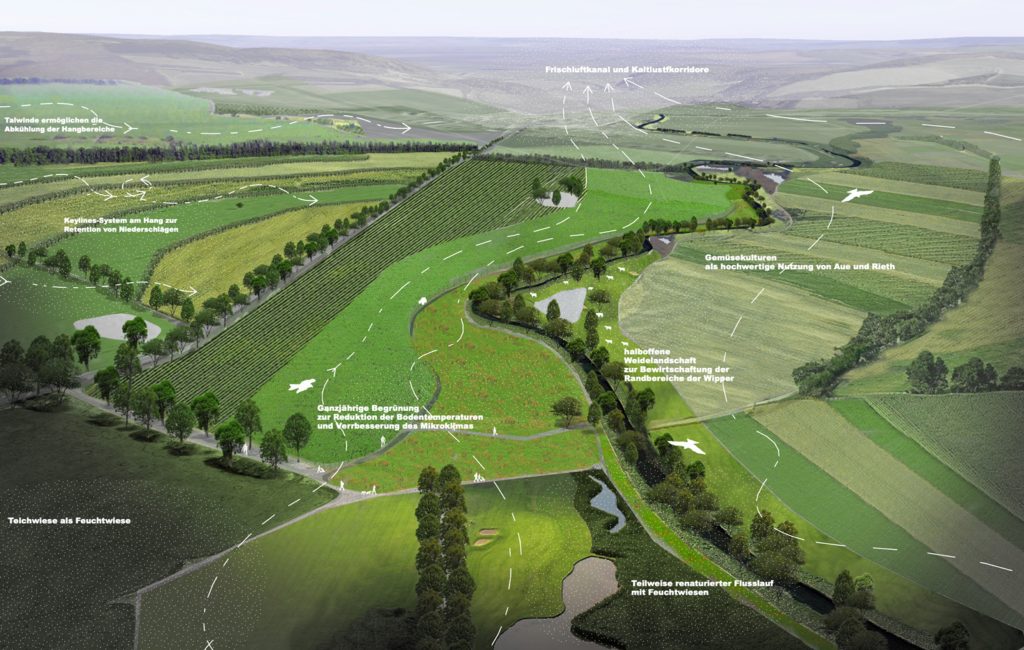
Hill slopes with Keylline design

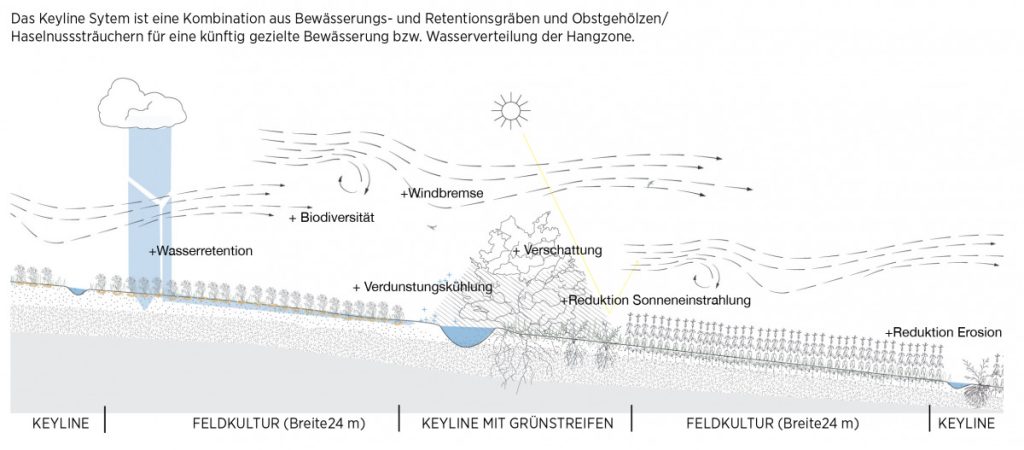

Co-operative crop rotation management
